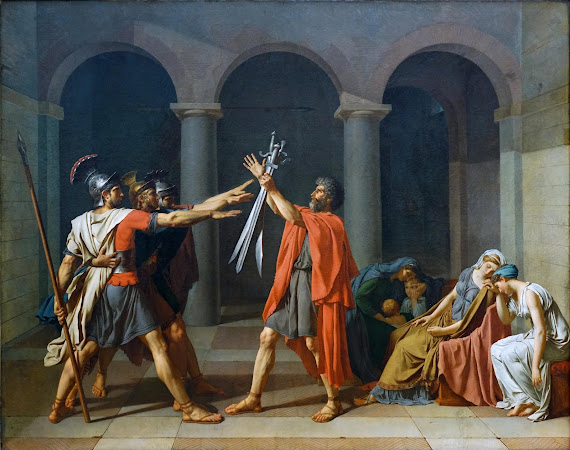Italian Renaissance
 |
| "The Last Judgement" Michelangelo Vatican City 1536-1541 |
Okay, now that you understand the religion behind this piece, let's talk about its elements. It took Michelangelo five years to complete this fresco and it includes over 300 individual figures. The detail in this is incredible and it is a very emotional piece if you know what you're looking at.
 |
| "The Last Judgement" |
The central figure is Christ and to his left is Mary; they look upon the people as they rise or fall to their fate.
 |
| "The Last Judgement" |
 |
| "The Last Judgement" |
As you can see, Michelangelo put so much detail into this one piece and he does a wonderful job bringing life to some of the stories from the Bible. I got chills when I first really analyzed this mural and I would absolutely have a copy of it at home, even though the copy is nothing compared to the real thing.
The Italian Renaissance introduced many new things, especially for the arts. Humanism was one of these things. Humanism was a key element and philosophy which helped shape artistic development for the Italian Renaissance. It prompted artists to display humans in a more life-like way. It also inspired artists like Michelangelo to articulate and express their own interpretations of religion, "It fostered the idea that an individual's faith was not totally governed by institutional religion, thereby freeing artists from the influence of the [church]" (Artyfactory).
While I do think Michelangelo put his own 'humanistic' touch into "The Last Judgement", I believe he still had some influence from the church. Renaissance humanism and its artists "exemplified the ideal of the 'Renaissance man' as they excelled at various disciplines and pioneered new techniques and inventions, defined the artistic canon and were heralded as "masters" of their own right" (The Art Story). In simpler terms, humanism reflected that 'Man is the measure of all things' and individuals shape their own destiny. Now if you read the Bible, yes, we humans have free will to do whatever we want. However, it is also known that God knows what we will do even before we've done it; he has already orchestrated a plan for us. In a way, He is actually the master. So, the philosophy of humanism kind of 'butts heads' with scripture.
I guess what I'm trying to say is even though Michelangelo's "The Last Judgement" was created and inspired by the influence of humanism, it doesn't really follow the philosophy completely. At least the way I see it, it doesn't. Or maybe I just do not understand humanism! *insert laughing emoji here*
Works Cited.
“10 Secrets of The Last Judgement by Michelangelo.” Michelangelo, www.michelangelo.org/the-last-judgement.jsp.
“Italian Renaissance Art- Humanism.” Artyfactory, www.artyfactory.com/art_appreciation/art_movements/italian-renaissance/italian-renaissance-art-humanism.html.
“Renaissance Humanism .” The Art Story, www.theartstory.org/definition/renaissance-humanism/.


Laura,
ReplyDeleteGreat choice! I was fortunate enough to see the Sistine Chapel when I was younger and you are right nothing beats the real deal. It is just absolutely breath taking. I remember when we were looking at the ceiling, our tour guild told us that after the ceiling was complete, the Vatican hired an apprentice of Michelangelo's to paint clothing onto the figures on the ceiling. I have always wondered if that was true and if it extended to other works done in the chapel my Michelangelo. I enjoyed reading your blog post about this, good job!
I liked your take on Michelangelo subtly putting his own take on humanism in his paintings despite pressure from the church! It brings a nice perspective into who he may have been as a person and how artists hold power over their works regardless of politics or religion.
ReplyDelete